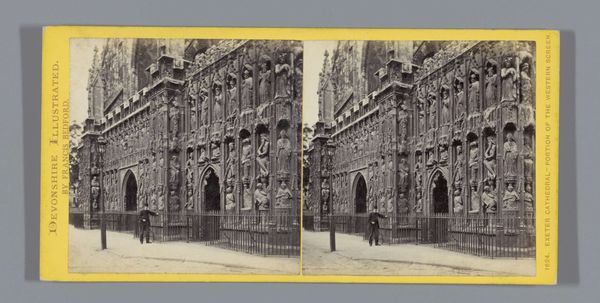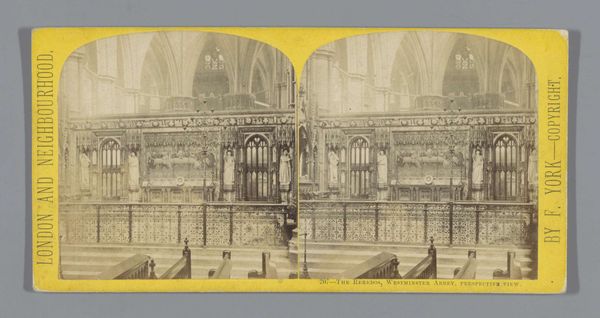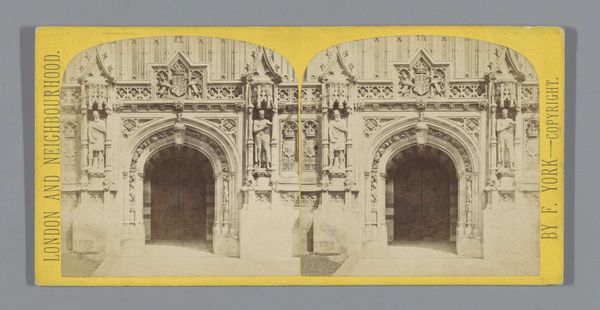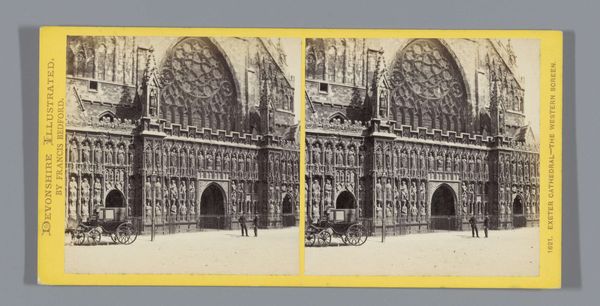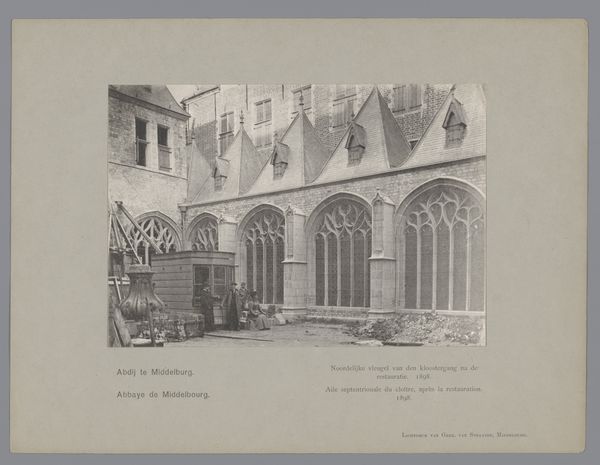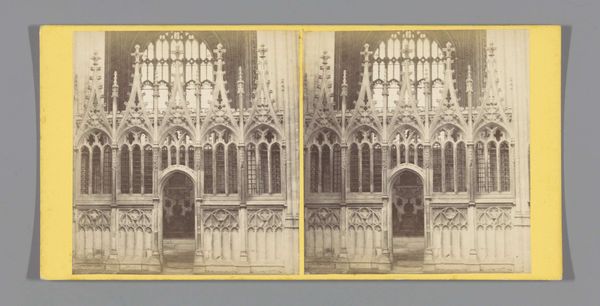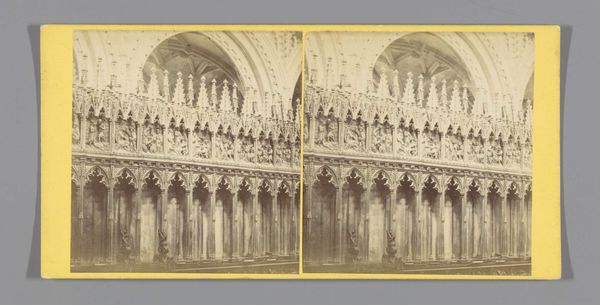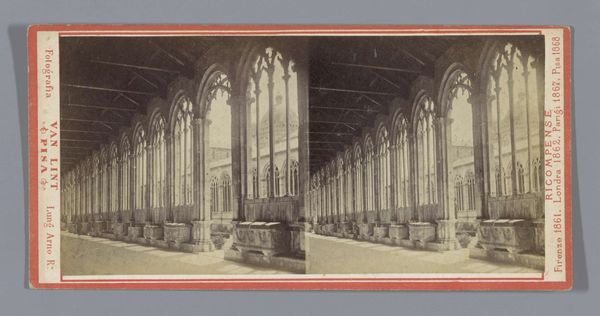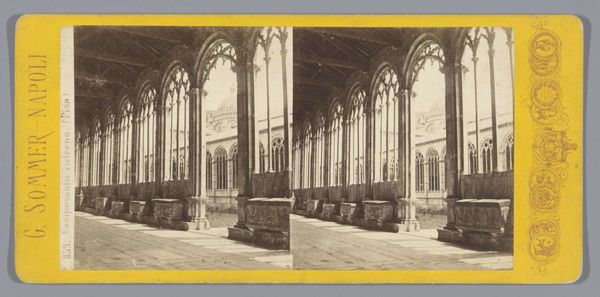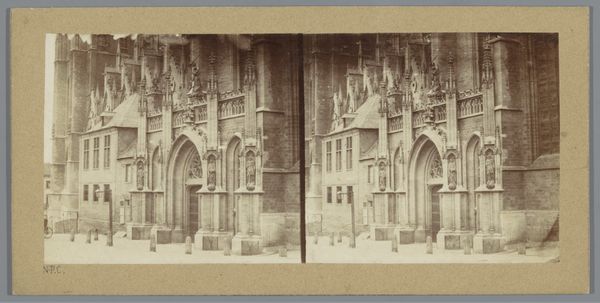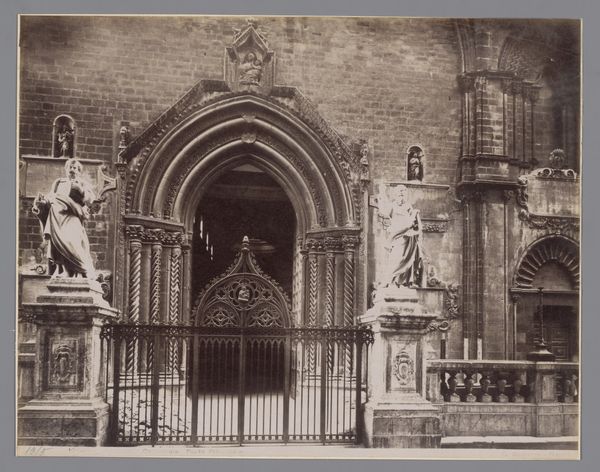
#
tall virtical shape
#
aged paper
#
paper non-digital material
#
flat design on paper
#
book mockup
#
unrealistic statue
#
folded paper
#
publication mockup
#
paper medium
#
mockup template
Dimensions: height 85 mm, width 170 mm
Copyright: Rijks Museum: Open Domain
Curator: Let's delve into this intriguing stereo card capturing "Oxaal van de Kathedraal van Exeter" taken sometime between 1850 and 1880 by Francis Bedford. The card format itself speaks volumes about Victorian visual culture. Editor: Immediately striking is the sheer detail afforded by the stereoscopic view. The delicate latticework of the organ screen almost seems to float in space, conveying a sense of ethereal weightlessness. The chairs in the foreground add to this feeling of serenity. Curator: Indeed, stereo cards like this were mass-produced, affordable glimpses into far-off places and architectural marvels. Think of it as a form of democratized travel through industrial production. What symbols can we unravel here? Editor: The Gothic architecture screams of spiritual aspiration, pointing heavenward. But also the power and reach of the Church during this era. Note the repeated arch motif; it appears throughout the structure. Could it be an expression of seeking shelter or refuge in faith? Curator: Interesting. I’m also thinking about Bedford’s choice of photography. The materials involved -- glass plates, chemicals, printing paper -- and the labour intensive darkroom processes all shaped this aesthetic, a world away from instantaneous digital imagery. These cards themselves became collectable objects, participating in a market driven by Victorian consumerism. Editor: Absolutely, and consider the organ itself—a massive, complex instrument whose sound would have filled this space. The pipes are not seen in full view but their imposing height contributes to this perception of awe, amplifying the screen as a site for both seeing and hearing religious doctrine. Curator: Good point. So the visual power of this "Oxall," or screen, supported by sound, reinforcing the ideological structures within Victorian society? Editor: Precisely! It invites us to reflect not just on the building’s architectural design, but on the role of imagery and music in conveying complex systems of belief during that time. Curator: I see your reading now. Exploring it through these different lenses sheds light on both the tangible production and intricate meanings embedded in this seemingly simple card. Editor: And considering that images shape how we perceive reality, analyzing them becomes essential to comprehending ourselves in this culture.
Comments
No comments
Be the first to comment and join the conversation on the ultimate creative platform.
